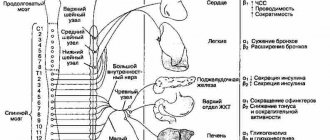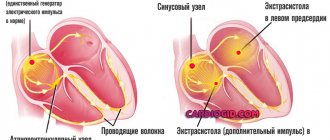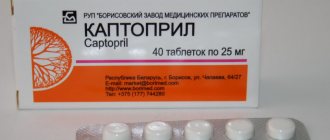Signs
Symptoms vary depending on the severity of the disease. The speed at which symptoms develop can also vary from several days to months. Systemic symptoms:
- decreased appetite;
- fever;
- lethargy;
- weight loss.
Vasculitis sometimes affects various organs: skin (red spots, small spots, bruises, itching); joints (pain, arthritis); lungs (cough, bad breathing); Gastrointestinal tract (mouth ulcers, abdominal pain); nose, throat, ears (nasal ulcers, rarely hearing loss); eyes (redness, itching, blurred vision); brain (pain, problems with thinking, weakness, paralysis); nerves (loss of strength in limbs, shooting pain).
Symptoms and signs of vasculitis
Symptoms of vasculitis vary. They depend on the nature of the lesion, the type of vasculitis, the localization of the inflammatory process, as well as the severity of the underlying disease.
Despite the variety of options, many patients have some of the same symptoms: fever, hemorrhagic skin rash, weakness, exhaustion, joint pain and muscle weakness, lack of appetite, weight loss, numbness in certain parts of the body.
Thromboangiitis obliterans (or Buerger's disease) is associated primarily with damage to the blood vessels of the extremities, manifested by pain in the legs and the appearance of large ulcers on the skin (cutaneous vasculitis on the legs).
Kawasaki disease primarily affects children under five years of age and has typical signs of vasculitis (redness of the skin, fever, and possibly eye inflammation).
Periarteritis nodosa mainly affects the middle blood vessels in various parts of the body, including the kidneys, intestines, heart, nervous and muscular systems, and skin. The skin is pale, and the rash with this type of vasculitis is purple.
Microscopic polyangiitis mainly affects small vessels in the skin, lungs and kidneys. This leads to pathological changes in organs and disruption of their functions. The disease is characterized by significant skin lesions, fever and weight loss in patients, the appearance of glomerulonephritis (immune damage to the glomeruli of the kidneys) and hemoptysis (pulmonary vasculitis)
Cerebral vasculitis (or brain vasculitis) is a serious disease characterized by inflammation of the walls of blood vessels in the brain. May lead to hemorrhage and tissue necrosis. The causes of this type of vascular vasculitis are still being clarified.
Takayasu's disease affects the large arteries of the body, including the aorta. Young women are at risk. Signs of this type are weakness and pain in the arms, weak pulse, headaches and vision problems.
Giant cell arteritis (Horton's disease). The process primarily affects the arteries of the head. Characterized by attacks of headaches, hypersensitivity of the scalp, pain in the jaw muscles when chewing, visual impairment up to blindness.
Scheleyn-Henoch vasculitis (hemorrhagic vasculitis) is a disease that mainly affects children, but also occurs in adults. The first signs of hemorrhagic vasculitis may appear 1-4 weeks after infectious diseases such as scarlet fever, ARVI, tonsillitis, etc. Leads to inflammation of the blood vessels of the skin, joints, intestines and kidneys. It is characterized by pain in the joints and abdomen, blood in the urine, redness of the skin on the buttocks, legs and feet.
Cryoglobulinemic vasculitis may be associated with infection with hepatitis C. The patient feels general weakness, develops arthritis, and purple spots on his legs.
Wegener's granulomatosis causes inflammation of the blood vessels in the nose, sinuses, lungs and kidneys. Typical symptoms of the disease are nasal congestion, as well as frequent nosebleeds, middle ear infections, glomerulonephritis and pneumonia.
Treatment
This aspect depends on the area affected, the state of the body, and the type of disease. The end result is to relieve the inflammatory process in the blood vessels as much as possible. In severe cases, prescription medications are used. If it occurs mildly, you can manage with painkillers. Prescription medications contain corticosteroids and antirheumatic medications. The products will help reduce inflammation and destroy inflamed cells.
Get a consultation with a general practitioner
Causes of vasculitis
Doctors cannot yet fully determine the causes of primary vasculitis. There is an opinion that this disease is hereditary in nature and is associated with autoimmune disorders (autoimmune vasculitis), plus negative external factors and infection with Staphylococcus aureus play a role.
The cause of the development of secondary (infectious-allergic vasculitis) in adults is a previous infection.
Other causes of vasculitis include the following:
- allergic reaction (to medications, pollen, book dust, fluff);
- autoimmune diseases (systemic lupus erythematosus, thyroid diseases);
- vaccination;
- abuse of sunbathing;
- consequences of injuries;
- negative reaction of the body to various chemicals, poisons;
- hypothermia of the body;
1 Consultation with an ophthalmologist
2 Consultation with a neurologist
3 ENT consultation
Where does vasculitis come from?
Doctors don't know for sure. It is known that sometimes Vasculitis - Symptoms and causes / Mayo Clinic vasculitis is associated with genetics and is inherited. But more often it happens that a person’s immune system goes crazy and mistakenly begins to attack the cells of the blood vessels of its own body.
Why this happens is not entirely clear. However, doctors have discovered several Vasculitis - Symptoms and causes / Mayo Clinic factors that precede such an immune failure:
- Acute infectious diseases. During them, viruses, bacteria, and fungi sometimes penetrate the walls of blood vessels, which may cause increased immune activity.
- Chronic infections. For example, hepatitis B and C.
- Causes of Vasculitis / Johns Hopkins Vasculitis Center allergic-type reactions to new medications or toxins that have entered the body.
- Diseases of the immune system. This could be, say, rheumatoid arthritis, scleroderma or lupus.
- Blood cancer.
This is by no means a complete list. But it is not yet possible to make it exhaustive. Researchers honestly admit that very often they simply do not understand why the vessels become inflamed in a particular case.
What is cutaneous vasculitis
Cutaneous vasculitis is the same type of changes in blood vessels, the inflammation of which provokes the occurrence of lesions of the skin and internal organs.
- Hemorrhagic vasculitis: causes, diagnosis, treatment, forms and symptoms (110 photos)
The disease of pathological allergic cutaneous vasculitis is divided into two degrees of severity. Subacute (without pronounced symptoms) and acute, in which the work is disrupted and failure of internal organs is possible.
Overdiagnosis of systemic vasculitis
Inflammation of the wall of blood vessels is an integral symptom of vasculitis, which is found in all patients without exception.
However, there are also other types of errors associated with overdiagnosis of primary vasculitis. Among clinicians with little practical knowledge of vasculitis, there is a tendency to call “systemic vasculitis” (especially often “polyarteritis nodosa” and “hemorrhagic vasculitis”) any unclear condition when the patient has a prolonged fever and has one or another set of nonspecific symptoms. Very often in such situations, the diagnosis seems to be proven by a skin biopsy - an examination of an excised area of skin and subcutaneous tissue under a microscope, revealing vascular inflammation. However, this research method does not reliably distinguish between primary systemic vasculitis and secondary (symptomatic) vasculitis.
Treatment of vasculitis
Conservative therapy for vasculitis is aimed at suppressing pathological autoimmune reactions with the production of antibodies. It is carried out in stages:
- relief of symptoms and achievement of remission;
- maintaining remission for 0.5–2 years;
- treatment of relapses.
In addition, prevention or elimination of concomitant diseases and complications is carried out.
The treatment regimen is based on the drugs of choice:
- hormones – for giant cell arteritis of GCA, polymyalgia rheumatica and Takayasu’s disease;
- hormones and cytostatics - for systemic, hemorrhagic and cryoglobulinemic vasculitis, polyarteritis nodosa and a number of others;
- immunosuppressants with hormones - for hemorrhagic vasculitis, if combination therapy with cytostatics is not effective;
- monoclonal antibodies - for systemic vasculitis, if combination therapy is not effective;
- basic antirheumatic drugs – in case of contraindications to the drugs of choice;
- immunoglobulins - for severe complications.
Diet therapy is also indicated . For functional kidney damage, plasmapheresis or hemosorption - hardware blood purification - are prescribed. In addition, according to indications, antiviral and symptomatic agents, antibiotics, drugs to maintain cardiac activity and prevent blood clotting are prescribed.
Conservative treatment of vasculitis is complex and long-term. In some forms, against the background of overgrowth, spasms and thrombosis of large vessels, surgical treatment is indicated. Without timely and correct treatment of vasculitis in children, the prognosis is unfavorable. The nature of the consequences depends on the type of disease.
Sources:
- https://academic.oup.com/ndt/article/30/suppl_1/i94/2324852 Despina Eleftheriou, Ezgi Deniz Batu, Seza Ozen, Paul A. Brogan. Vasculitis in children // Nephrology Dialysis Transplantation, Volume 30, Issue suppl_1, 1 April 2015, Pages i94–i103.
- E.V. Borisova. Hemorrhagic vasculitis in children // Pediatrics, No. 6, 2004, pp. 51-56.
- AND I. Lutfullin. Kawasaki syndrome: clinical algorithms and the problem of underdiagnosis of the disease // Bulletin of modern clinical medicine, 2021, vol. 9, issue 2, 52-60/
The information in this article is provided for reference purposes and does not replace advice from a qualified professional. Don't self-medicate! At the first signs of illness, you should consult a doctor.
Prevention of vasculitis
Prevention of vasculitis is necessary not only to prevent the development of this disease, but also for its therapeutic purposes, which will help speed up recovery and minimize the development of complications.
Preventive measures include:
- Avoiding stress;
- Do not use medications without consulting a doctor;
- Do not leave various diseases to chance, so that they do not become chronic, especially infectious ones;
- Quitting bad habits – smoking, drinking alcoholic beverages;
- Maintaining normal body weight;
- Lead an active lifestyle, move more;
- Try not to eat unhealthy and unhealthy foods;
- Eating mainly food enriched with vitamins and microelements (minerals).
Frequently asked questions about vasculitis
How does vasculitis manifest?
This disease has many symptoms. Common symptoms include malaise, fever, changes in blood pressure and disturbances in the circulatory system.
Why is vasculitis dangerous?
Vasculitis is an insidious disease that leads to tissue destruction and dysfunction of vital organs.
What happens if vasculitis is not treated?
Without proper treatment, the disease will progress and become more complicated, often resulting in disability or death.
MODERN CLASSIFICATION AND CLINICAL COURSE OF ANGITIS (VASCULITIS) OF THE SKIN
The deviations of laboratory parameters observed in patients with cutaneous angiitis are briefly listed. The paper presents a classification of angiitides and outlines the clinical presentation of various types of these diseases. Emphasis is laid on the determination of a stage and the progression of a process, which is very important to elaborate the maximum individualized treatment policy. Laboratory abnormalities observed in patients with skin angiitides are briefly listed. O.L. Ivanov, doctor med. Sciences, prof., head of the department of skin and venereal diseases of the Moscow Medical Academy named after. THEM. Sechenov. Prof. OL Ivanov, MD, Head, Department of Skin and Venereal Diseases, IM Sechenov Moscow Medical Academy. WITH
Vascular skin lesions are common and often quite severe dermatoses, which still represent a big problem in theoretical and practical dermatology. The main place in this broad group of dermatoses is occupied by inflammatory lesions of the blood vessels of the skin and subcutaneous tissue - the so-called angiitis, or vasculitis, of the skin. The term “angiitis” (from the Greek angion - vessel) is currently recognized as etymologically more successful than “vasculitis” (from the Latin vasculum - vessel), since angiitis affects vessels of various sizes (from main to capillaries), and not only the smallest ones. In terms of content, the terms “angiitis” and “vasculitis” are currently synonymous. Angiitis (vasculitis) of the skin is called dermatoses, in the clinical and pathomorphological symptoms of which the initial and leading link is nonspecific inflammation of the walls of the dermal and hypodermal blood vessels of different sizes. Currently, there are up to 50 nosological forms belonging to the group of skin angiitis. A significant part of these nosologies have great clinical and pathomorphological similarities, often bordering on identity, which should be kept in mind when studying the literature and diagnosing a patient. Unfortunately, there is still no single generally accepted classification of skin angiitis, which is explained by insufficient knowledge of the etiology, pathogenesis, clinical course and a number of other issues related to this complex group of dermatoses. Most clinicians use predominantly morphological classifications of cutaneous angiitis, which are usually based on clinical changes in the skin, as well as the depth of location (and, accordingly, the caliber) of the affected vessels. An acceptable working classification of skin angiitis for practical purposes, developed at the Clinic of Skin and Venereal Diseases of the MMA named after. THEM. Sechenov, is presented in the table.
CLASSIFICATION OF AGIITIS (VASCULITIS) OF THE SKIN
| Clinical forms | Synonyms | Main manifestations |
| Dermal angiitis | ||
| Polymorphic dermal angiitis | Gougereau-Duperre syndrome. Ruiter's arteriolitis. Gougereau-Ruiter disease. Necrotizing vasculitis. Leukocytoclastic vasculitis | |
| urticarial type | Urticarial vasculitis | Inflammatory spots, blisters |
| hemorrhagic type | Hemorrhagic vasculitis. Hemorrhagic leukocytoclastic microbid Miescher - Shtork. Anaphylactoid purpura of Schönlein-Henoch. Hemorrhagic capillary toxicosis | Petechiae, edematous purpura (“palpable purpura”), ecchymoses, hemorrhagic blisters |
| papulonodular type | Nodular dermal allergide Gougereau | Inflammatory nodules and plaques, small edematous nodes |
| papulonecrotic type | Necrotizing nodular dermatitis Werther-Dümling | Inflammatory nodules with scarred necrosis |
| pustular-ulcerative type | Ulcerative dermatitis. Pyoderma gangrenosum | Vesiculopustules, erosions, ulcers, scars |
| necrotic-ulcerative type | Fulminant purpura | Hemorrhagic blisters, hemorrhagic necrosis, ulcers, scars |
| polymorphic type | Three-symptom Gougereau-Duperre syndrome. Polymorpho-nodular type of Ruiter's arteriolitis | More often there is a combination of blisters, purpura and superficial small nodes. A combination of any elements is possible |
| Chronic pigmentation | Hemorrhagic pigmentary dermatoses. Purpura Schamberg-Majocca disease | |
| petechial type | Persistent progressive pigmented purpura of Schamberg. Schamberg's disease | Petechiae, hemosiderosis spots |
| telangiectatic type | Telangiectatic purpura Majocchi | Petechiae, telangiectasia, hemosiderosis spots |
| lichenoid type | Pigmented purpuric lichenoid angiodermatitis Gougerot-Blum | Petechiae, lichenoid papules, telangiectasia, hemosiderosis spots |
| eczematoid type | Doukas-Kapenatakis eczematoid purpura | Petechiae, erythema, lichenification, scaly crust, hemosiderosis spots |
| Dermo-hypodermal angiitis | ||
| Livedoangiitis | Cutaneous form of periarteritis nodosa. Necrotizing vasculitis. Livedo with knots. Livedo with ulcerations | Branched and reticular livedo, nodular seals, hemorrhagic spots, necrosis, ulcers, scars |
| Hypodermal angiitis | ||
| Angiitis nodosum: acute erythema nodosum | Swelling bright red nodes, arthrlagia, fever | |
| chronic erythema nodosum | Nodular vasculitis | Recurrent nodes without pronounced general phenomena |
| migratory erythema nodosum | Vilanova-Pinol's variable hypodermatitis. Erythema nodosum migrans of Böfverstedt. Vilanova's disease | Asymmetrical flat node, growing along the periphery and resolving in the center |
| Nodular-ulcerative angiitis | Nodular vasculitis. Nontuberculous erythema induratum | Dense nodes with ulceration, scars |
The presented classification includes the most common forms of cutaneous angiitis. In addition to rare variants not included in this classification, there are also transitional and mixed forms of skin angiitis, combining the characteristics of two or more types of angiitis.
| Rice. 1. Dermal angiitis. a - urticaria type; b — hemorrhagic type; c - papulonodular type; d — papulonecrotic type; d — pustular-ulcerative type; e — necrotic-ulcerative type; g - polymorphic type (combination of hemorrhagic and papulonecrotic types). | A | b | V |
| G | d | e | and |
| a Fig. 2. Chronic pigmentary purpura. a - petichial rash; b - eczematoid type. | b |
Rice. 3. Livedoangiitis.
| Rice. 4. Erythema nodosum. a - acute; b — subacute (migratory); c - chronic. | A | b | V |
The clinical manifestations of cutaneous angiitis are extremely diverse. However, there are a number of common features that clinically unite this polymorphic group of dermatoses. These include: the inflammatory nature of skin changes; tendency of rashes to edema, hemorrhage, necrosis; symmetry of the lesion; polymorphism of precipitating elements (usually evolutionary); primary or predominant localization on the lower extremities (primarily on the legs), the presence of concomitant vascular, allergic, rheumatic, autoimmune and other systemic diseases; frequent association with previous infection or drug intolerance; the course is acute or with periodic exacerbations. Let us dwell briefly on the clinical features of each form of cutaneous angiitis, since it is they that allow us to suspect and then justify the correct diagnosis. Polymorphic dermal angiitis
, as a rule, has a chronic relapsing course and is distinguished by extremely diverse morphological symptoms, which has given rise to its confusing and abundant nomenclature.
The rash initially appears on the legs, but can also appear on other parts of the skin, less often on the mucous membranes. Blisters, hemorrhagic spots of various sizes, inflammatory nodules and plaques, superficial nodes, papulonecrotic rashes, vesicles, bubbles, pustules, erosions, superficial necrosis, ulcers, scars are observed. The rash is sometimes accompanied by fever, general weakness, arthralgia, and headache. The rash that appears usually persists for a long time (from several weeks to several months) and tends to recur. The onset of the disease and its relapses are often provoked by acute infectious diseases (sore throat, flu, acute respiratory infections), hypothermia, physical or nervous stress, and less often by taking any medications or food intolerance. Depending on the presence of certain morphological elements of the rash, various types of superficial dermal angiitis are distinguished (see table). However, often different elements are combined, creating a picture of a polymorphic type of angiitis. The urticarial type,
as a rule, simulates the picture of chronic recurrent urticaria, manifesting itself as blisters of various sizes that appear in different areas of the skin.
However, unlike urticaria, blisters with urticarial angitis are particularly persistent, persisting for 1 - 3 days (sometimes longer). Instead of severe itching, patients usually experience a burning sensation or a feeling of irritation in the skin. Rashes are often accompanied by arthralgia, sometimes abdominal pain, i.e. signs of systemic damage. Examination may reveal glomerulonephritis. Patients also note an increase in ESR, hypocomplementemia, increased lactate dehydrogenase activity, positive inflammatory tests, and changes in the ratio of immunoglobulins. Treatment with antihistamines usually has no effect. As a rule, middle-aged women suffer from urticarial angiitis. The diagnosis is finally confirmed by pathohistological examination of the skin, which reveals a picture of leukocytoclastic angiitis. The hemorrhagic type
is most typical for superficial angiitis.
The most typical symptom with this option is the so-called “palpable purpura” - edematous hemorrhagic spots of various sizes, usually localized on the legs and back of the feet, easily determined not only visually, but also by palpation, which distinguishes them from the symptoms of other purpuras, in particular from Schamberg-Majocca disease. However, the first rashes of the hemorrhagic type are usually small swollen inflammatory spots that resemble blisters and soon transform into a hemorrhagic rash. With a further increase in inflammatory phenomena against the background of confluent purpura and ecchymosis, hemorrhagic blisters can form, leaving deep erosions or ulcers after opening. The rash is usually accompanied by moderate swelling of the lower extremities. Hemorrhagic spots may appear on the mucous membranes of the mouth and pharynx. The described hemorrhagic rashes that occur acutely after a cold (usually after a sore throat) and are accompanied by fever, severe arthralgia, abdominal pain and bloody stools constitute the clinical picture of Henoch-Schönlein purpura, which is more often observed in children. The papulonodular type
is quite rare.
It is characterized by the appearance of smooth, flattened inflammatory nodules of rounded outline the size of a lentil or a small coin, sometimes larger, as well as small superficial, blurred, edematous pale pink nodules the size of a hazelnut, painful on palpation. The rashes are localized on the extremities, usually on the lower extremities, rarely on the torso, and are not accompanied by pronounced subjective sensations. The papulonecrotic type
is manifested by small flat or hemispherical inflammatory non-scaling nodules, in the central part of which a dry necrotic scab soon forms, usually in the form of a black crust.
When the scab is torn off, small rounded superficial ulcers are exposed, and after the papules are reabsorbed, small “stamped” scars remain. The rashes are located, as a rule, on the extensor surfaces of the extremities and clinically completely simulate papulonecrotic tuberculosis, with which the most careful differential diagnosis should be carried out. The pustular-ulcerative type
usually begins with small vesiculopustules, reminiscent of acne or folliculitis, quickly transforming into ulcerative lesions with a tendency to steady eccentric growth due to the disintegration of the edematous bluish-red peripheral ridge.
The lesion can be localized on any part of the skin, most often on the legs, in the lower half of the abdomen. After the ulcers heal, flat or hypertrophic scars remain that retain an inflammatory color for a long time. The necrotic-ulcerative type
is the most severe variant of dermal angiitis.
It begins acutely (sometimes lightning fast) and takes a protracted course (if the process does not end quickly in death). As a result of acute thrombosis of inflamed blood vessels, necrosis (infarction) of one or another area of the skin occurs, manifested by necrosis in the form of an extensive black scab, the formation of which may be preceded by an extensive hemorrhagic spot or bubble. The process usually develops over several hours, accompanied by severe local pain and fever. The lesion is most often located on the lower extremities and buttocks. Purulent-necrotic scab persists for a long time. The ulcers formed after its rejection have different sizes and shapes, contain purulent discharge, and slowly scar. The polymorphic type
is characterized by a combination of various eruptive elements characteristic of other types of dermal angiitis.
More often there is a combination of edematous inflammatory spots, hemorrhagic rashes of a purpuric nature and superficial edematous small nodes, which constitutes the classic picture of the so-called three-symptom Gougereau-Duperre syndrome and the identical polymorphonodular type of Ruiter arteriolitis. Chronic purpura pigmentosa
(Schamberg-Majocca disease) is a chronic dermal capillaritis affecting the papillary capillaries.
Depending on the clinical characteristics, the following varieties (types) of hemorrhagic pigmentary dermatoses can be distinguished. Petechial type
(persistent progressive pigmentary purpura of Schamberg, progressive pigmentary dermatosis of Schamberg) - the main disease of this group, which is, as it were, parental to its other forms, is characterized by multiple small (point-like) hemorrhagic spots without swelling (petechiae) resulting in persistent brownish-yellow spots hemosiderosis of various sizes and shapes.
The rashes are most often located on the lower extremities, are not accompanied by subjective sensations, and are observed almost exclusively in men. The telangiectatic type
(telangiectatic purpura Majocchi, Majocchi disease) is most often manifested by peculiar spots - medallions, the central zone of which consists of small telangiectasias (on slightly atrophic skin), and the peripheral zone - of small petechiae against the background of hemosiderosis (i.e. here elements of Schamberg's disease are associated with telangiectasias).
The lichenoid type
(pigmented purpuric lichenoid angiodermatitis of Gougerot-Blum) is characterized by disseminated small lichenoid shiny nodules of almost flesh-color, combined with petechial rashes, spots of hemosiderosis and sometimes small telangiectasias, which suggests Schamberg-Majocca disease with lichenoid rashes.
The eczematoid type
(Dukas-Kapenatakis eczematoid purpura) is distinguished by the presence in the lesions, in addition to petechiae and hemosiderosis, of eczematization phenomena (swelling, diffuse redness, papulovesicles, crusts), accompanied by severe itching.
Livedoangiitis
occurs almost exclusively in women, usually during puberty.
Its first symptoms are persistent livedo-cyanotic spots of various sizes and shapes, forming a bizarre looped network on the lower extremities, less often on the forearms, hands, face and torso. The color of the spots sharply intensifies upon cooling. Over time, the intensity of livedo becomes more pronounced; against its background (mainly in the area of the ankles and dorsum of the feet), small hemorrhages and necrosis occur, and ulcerations form. In severe cases, against the background of large bluish-purple livedo spots, painful nodular compactions are formed, subject to extensive necrosis, followed by the formation of deep, slowly healing ulcers. Patients feel chilliness, nagging pain in the extremities, severe throbbing pain in nodes and ulcers. After the ulcers heal, whitish scars remain with a zone of hyperpigmentation around them. Angiitis nodosum
(nodular vasculitis) includes various variants of erythema nodosum, differing from each other in the nature of the nodes and the course of the process.
Acute erythema nodosum
is a classic, although not the most common, variant of the disease.
It manifests itself as a rapid rash on the legs (rarely on other parts of the extremities) of bright red, swollen, painful nodes the size of a child’s palm against the background of general swelling of the legs and feet. An increase in body temperature to 38-39 ° C, general weakness, headache, and arthralgia are noted. The disease is usually preceded by a cold or a sore throat. The nodes disappear without a trace within 2 - 3 weeks, successively changing their color to bluish, greenish, yellow (“bruise bloom”). There is no ulceration of the nodes. No relapses are observed. Chronic erythema nodosum
is the most common form of cutaneous angitis, characterized by a persistent recurrent course, usually occurring in middle-aged and elderly women, often against the background of general vascular and allergic diseases, foci of focal infection and inflammatory or tumor processes in the pelvic organs (chronic adnexitis, fibroids uterus).
Exacerbations more often occur in spring and autumn, and are characterized by the appearance of a small number of bluish-pink dense painful nodes the size of a hazelnut or a walnut. At the beginning of their development, the nodes may not change the color of the skin, may not rise above it, and can only be determined by palpation. The almost exclusive localization of nodes is the lower leg (usually their anterior and lateral surfaces). There is moderate swelling of the legs and feet. General phenomena are inconsistent and poorly expressed. Relapses last several months, during which some nodes may resolve and others appear to replace them. Migratory erythema nodosum
usually has a subacute, less often chronic course and the peculiar dynamics of the main lesion.
The process, as a rule, is asymmetrical in nature and begins with the appearance of a single flat node on the anterolateral surface of the leg. The node has a pinkish-bluish color, a doughy consistency and quite quickly increases in size due to peripheral growth, soon turning into a large deep plaque with a sunken and paler center and a wide, swell-like, more saturated peripheral zone. It may be accompanied by single small nodes, including on the opposite shin. The lesion lasts from several weeks to several months. General phenomena are possible (low-grade fever, malaise, arthralgia). Ulcerative angiitis
in a broad sense can be considered as an ulcerative form of chronic erythema nodosum, but due to very characteristic clinical features that bring it closer to erythema induratum, it deserves isolation. The process from the very beginning has a torpid course and is manifested by dense, rather large, slightly painful bluish-red nodes, prone to disintegration and ulceration with the formation of sluggish scarring ulcers. The skin over fresh nodules may have a normal color, but sometimes the process begins with a bluish spot, which transforms over time into a nodular seal and ulcer. After the ulcers have healed, flat or retracted scars remain, the area of which can again thicken and ulcerate during exacerbations. The typical location is the back surface of the legs (calf region), but the nodes can also be located in other areas. Chronic pastosity of the legs is characteristic. The process has a chronic relapsing course, observed in middle-aged women, sometimes in men. The clinical picture of nodular-ulcerative angiitis often completely simulates erythema induratum of Bazin, with which the most careful differential diagnosis should be carried out. It must be remembered that along with the described clinical varieties of cutaneous angiitis, there are rarer and atypical variants, as well as mixed and transitional forms that combine the characteristics of two or more varieties (for example, livedoangiitis and urticarial vasculitis, nodular and papulonecrotic angiitis). With long-term management of the patient, it is sometimes possible to observe the transformation of one type of angiitis into another. After diagnosing a patient with one or another form of angiitis, it is also necessary to establish the stage and degree of activity of the process, which is very important for the development of the most individualized therapeutic tactics. With cutaneous angiitis, as with other dermatoses, progressive, stationary and regressive stages can be distinguished, the features of which do not require additional characteristics and are easily identified by practitioners. The degree of activity is determined by the prevalence of skin lesions, the presence of general phenomena and signs of damage to other organs and systems, as well as changes in laboratory parameters. For practical purposes, there are two degrees of activity: I (low) and II (high). With grade I activity, the skin lesion is limited (local) in nature, represented by a small or moderate number of rashes, there are no general symptoms (fever, malaise, headache), there are no signs of involvement of other organs, laboratory parameters do not deviate significantly from the norm. With stage II activity, the process is disseminated in nature (in particular, extends beyond the legs), the rash is very profuse, there are general symptoms (chilling, fever from low-grade to hectic, general weakness, headache), signs of systemicity are detected (arthralgia, myalgia, lymphadenopathy , gastrointestinal disorders, etc.), deviations in various laboratory parameters are observed (increased ESR to 20 mm/h or more, leukocytosis or leukopenia, eosinophilia, decreased hemoglobin content, thrombocytopenia, increased total protein, a2- or g-globulins, changes in the content of individual immunoglobulins, a decrease in the level of complement, the appearance of C-reactive protein, positive tests for rheumatoid factor, the appearance of ANF and antibodies to DNA, high titers of antistreptolysin-O and antihyaluronidase, a decrease in the level of fibrinolysis, etc.). Thus, to make a detailed diagnosis of cutaneous angiitis, it is necessary to conduct a very detailed examination of the patient.
Literature:
1. Potekaev N.S., Ivanov O.L. Angiitis of the skin (diagnosis, treatment, prevention). Methodical instructions. M., 1983, P. 30 2. Ivanov O.L., Modern aspects, problems of skin angiitis. // Bulletin of the Russian Academy of Medical Sciences, 1995, 1, 7-9. 3. Ivanov O.L., Babayan R.S., Potekaev N.S. On the issue of terminology and clinical picture of skin vasculitis (angiitis). // Vestn. dermatol. and Venerol., 1984, 7, 37-42. 4. Shaposhnikov O.N., Demenkova N.V. Vascular skin lesions. L., Medicine 1974, P. 214. 5. Rhyne TI, Wilkinson DS. Cutaneous Vasculitis: "angiitis". — In: Textbook of Dermatology. Oxford-London 1979;993-1058.
Causes of the disease
The reasons for the formation of primary vasculitis are still unknown to science. Secondary disease can occur against the background of:
- acute or chronic infection;
- genetic (hereditary) predisposition;
- thermal effects (overheating or hypothermia of the body);
- various injuries;
- burns;
- contact with chemicals and poisons.
Another cause of vasculitis can be viral hepatitis. One or more risk factors are enough to change the antigenic structure of tissues. In this case, the immune system begins to secrete antibodies, which further damage the tissue, in this case the blood vessels. This leads to an autoimmune reaction and inflammatory and degenerative processes.
Classification of the disease
Vasculitis is classified based on etiology, pathogenesis, type of vessels affected and the nature of the rash. Genetic and demographic factors, clinical manifestations and predominant lesions of internal organs are also taken into account.
Based on the factors preceding the disease, primary and secondary vasculitis are distinguished. Primary - caused by inflammation of the vascular wall, secondary - in which vascular inflammation is a reaction to another disease (lupus erythematosus, rheumatism, diabetes mellitus, granulomatosis, sarcoidosis, hepatitis).
according to the diameter of the affected vessels :
- small vessels - affects capillaries and venules, arterioles and small arteries of internal organs;
- middle vessels - mainly affects the abdominal arteries and their branches. Often cause stenoses and aneurysms;
- large vessels - affect the aorta and its main branches.
In addition, there are groups of vasculitis :
- small vessels with immune complexes;
- with trigger connective tissue diseases;
- with an established etiology of a metabolic or infectious nature;
- with damage to one organ.
Diagnostics
Since the disease is serious and manifests itself differently in each person, only a doctor can diagnose vasculitis. After the therapist collects the necessary medical history, he will refer the patient to a specialist.
For an accurate diagnosis, the patient is prescribed:
- Ultrasound and x-ray of the diseased organ;
- MRI and CT;
- angiography;
- echocardiography;
- general blood and urine tests;
- blood chemistry.
If it is difficult to make a diagnosis, a biopsy of the affected tissue is performed, which makes it possible to accurately determine the presence and type of disease.
Symptoms of vasculitis
Common symptoms of vasculitis are:
- Increased fatigue, general weakness and malaise;
- Increased body temperature;
- Paleness of the skin;
- Lack of appetite, nausea, sometimes vomiting;
- Loss of body weight;
- Exacerbation of cardiovascular diseases;
- Headaches, dizziness, fainting;
- Visual impairment;
- Sinusitis, sometimes with the formation of nasal polyps;
- Damage to the kidneys, lungs, upper respiratory tract;
- Impaired sensitivity - from minimal to hypersensitivity;
- Arthralgia, myalgia;
- Skin rashes.
The symptoms (clinical manifestations) of vasculitis largely depend on the type, location and form of the disease, so they may differ somewhat, but the main symptom is a violation of normal blood circulation.
What is vasculitis and why is it dangerous?
Vasculitis Vasculitis - Symptoms and causes / Mayo Clinic - is an inflammation of the walls of blood vessels.
Sometimes the disease is called angiitis. The difference between these terms is purely linguistic: “vasculitis” comes from the Latin word “vessel” (vasculum), and angiitis - from exactly the same, but ancient Greek (ἀγγεῖον). Vasculitis can affect Vasculitis| Angiitis/MedlinePlus veins, arteries and tiny capillaries. When a blood vessel becomes inflamed, it swells and becomes narrower. As a result, blood flow becomes more difficult. And this can lead to two serious complications:
- The vessel is completely blocked, the blood flow in it stops. As a result, areas of organs and tissues that received nutrition through this vessel begin to die.
- The walls of the vessel stretch greatly to allow the normal volume of blood to pass through. This distension is called an aneurysm. If an excessively stretched vessel wall bursts, this can cause internal bleeding. Sometimes deadly.







